Why you can trust Tom's Hardware
Grayscale and Gamma Tracking
Our grayscale and gamma tests use Calman calibration software from Portrait Displays. We describe our grayscale and gamma tests in detail here.
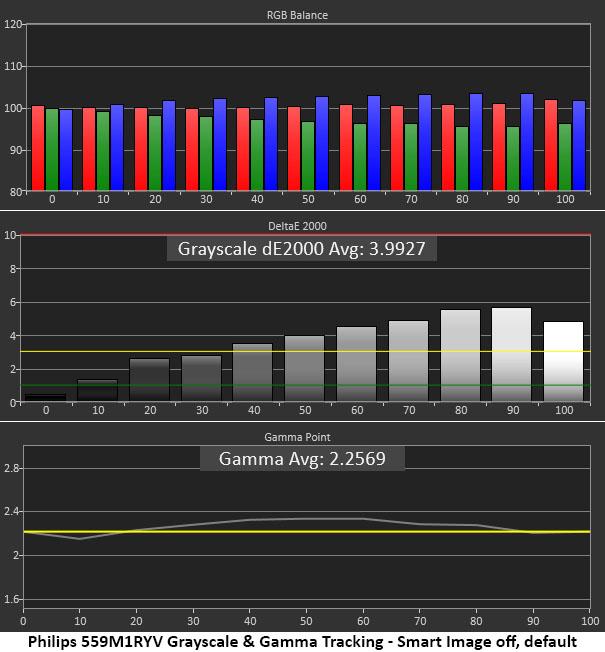


With SmartImage turned off, the 559M1RYV’s grayscale errors are minor. There is a slight purple tint which can be seen in test patterns but not so much in actual content. Calibration isn’t required, but visible gains can be had with adjustment. Gamma tracks reasonably well with some slight darkness in the midtones.
Using the RGB sliders and setting gamma to 2.4 results in reference level accuracy. Grayscale errors are all at or below 1dE— it doesn’t get better than that. Gamma tracks perfectly straight on the 2.2 line. This has a very positive effect on color, which you’ll see in our gamut tests below.
If you plan to use the sRGB mode, know that it runs slightly cool. This error is barely visible in test patterns and is not a problem in actual content. The only downside is a brightness control locked at around 500 nits. This will look very bright in all but the sunniest rooms.
Comparisons

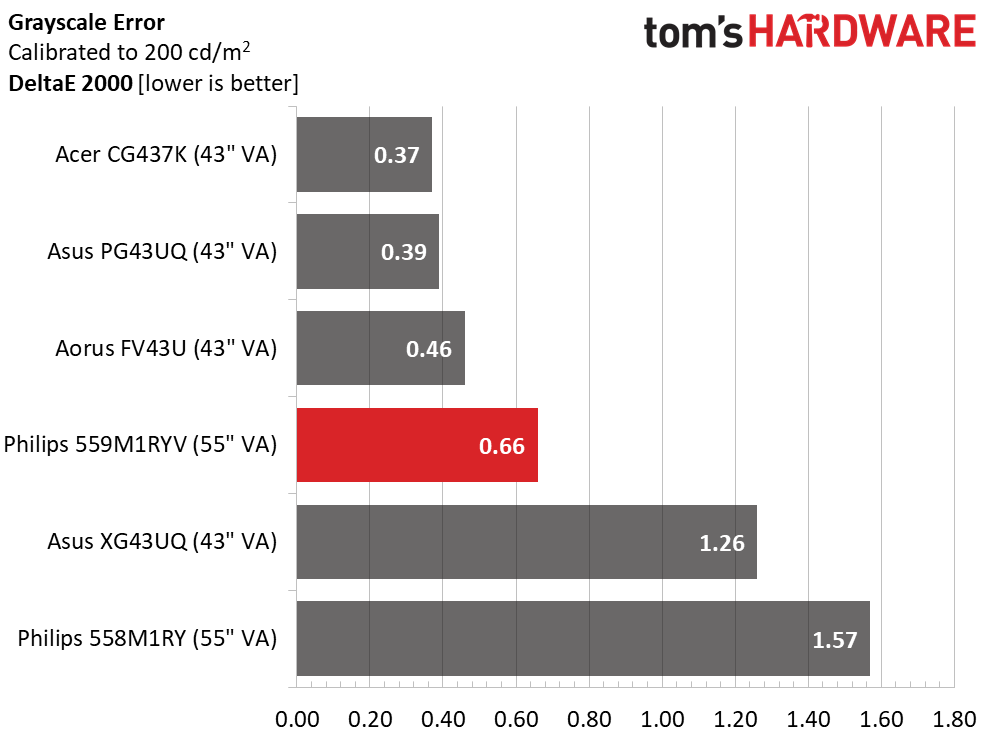
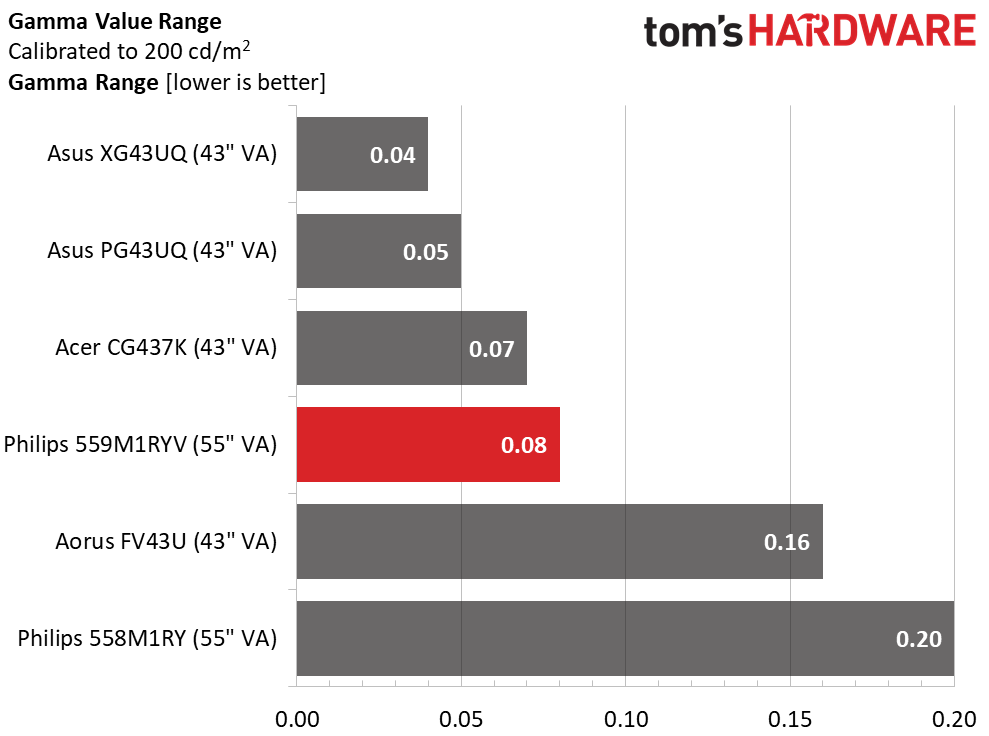
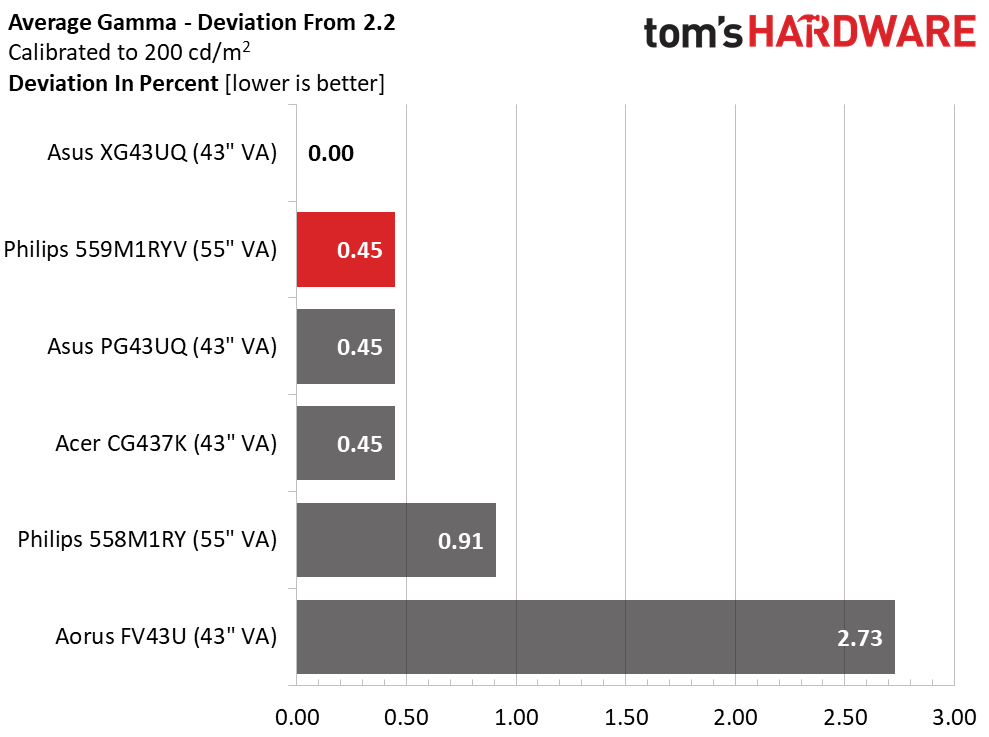
The 559M1RYV is a little better than the two Asus monitors in out-of-box grayscale accuracy. The Philips doesn’t need calibration, but will benefit from it, and the Asus screens should be calibrated. 3.99dE is an average result.
The post-calibration 0.66dE score shows excellent performance. Though in fourth place, the Philips is still at reference level. All the monitors here have visually perfect grayscale tracking after adjustment.
The 559M1RYV has exemplary gamma tracking as well. With a 0.08 range of values and a 0.45% deviation, it is almost exactly on spec. This makes for superior color saturation and a realistic image that looks great in all kinds of content.
Get Tom's Hardware's best news and in-depth reviews, straight to your inbox.
Color Gamut Accuracy
Our color gamut and volume testing use Portrait Displays’ Calman software. For details on our color gamut testing and volume calculations, click here.
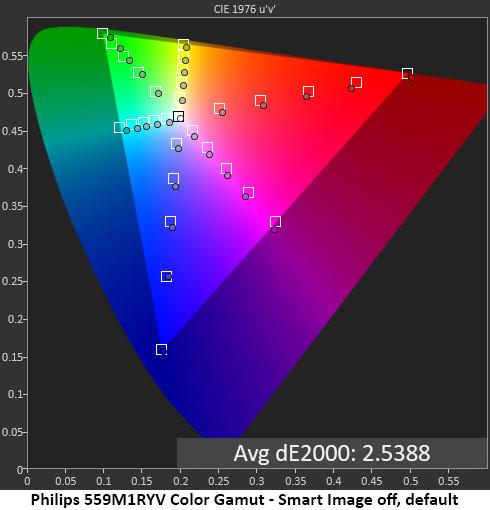


The 559M1RYV’s default color chart has no errors that are visible in either test patterns or content. The white point is only slightly off the target’s center. Saturation and hue measurements are all close to 2.5dE or less. The average of 2.54dE is very low. Like most extended color monitors, green is slightly under-saturated.
After calibration, the error is down to 1.46dE, which is reference level. All color targets are spot on except for green, which is a little under. It doesn’t get much better than this until you get into more expensive professional screens.
The sRGB mode tracks that gamut very well, with no visible errors and only slight under-saturation in the red primary. The white point is a bit cool, but the mode is accurate enough for gaming and general use. Our only complaint is its high brightness, which cannot be adjusted.
Comparisons
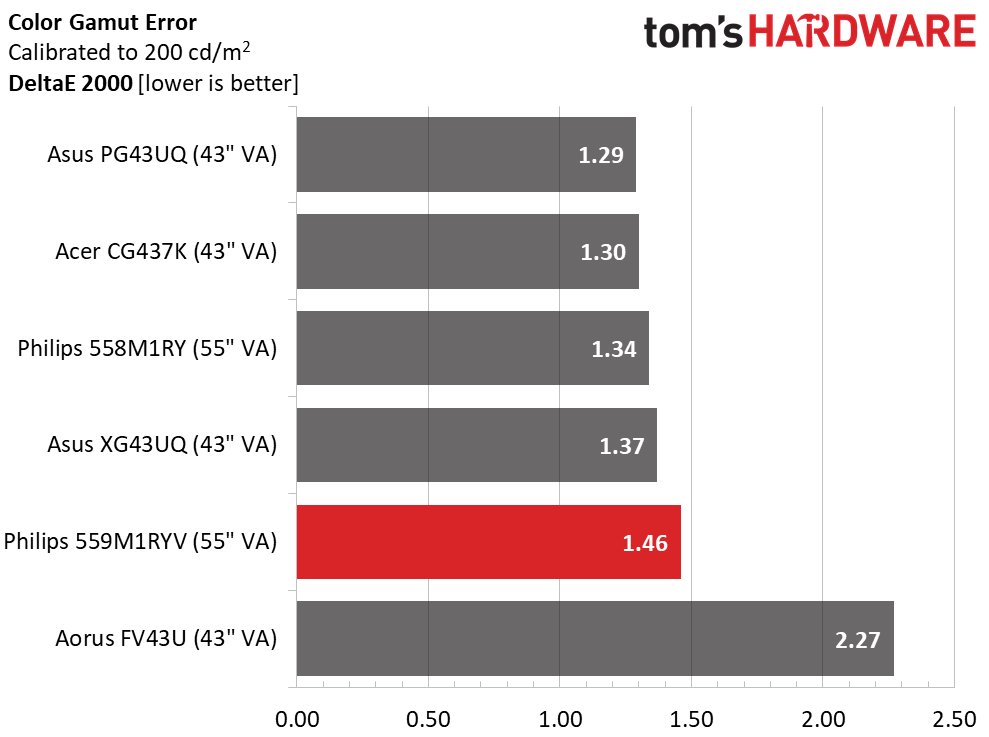

When looking at color error, we again see how competitive the jumbo screens category is. The 559M1RYV’s 1.46dE color error would fare well in just about any group of displays. That it finishes fifth here speaks less to deficiency and more to the category’s general quality. You won’t find a bad display here.
The Philips screen’s gamut volume is also in the middle of this group, but when taken as a whole, the 559M1RYV is a bit more colorful than most wide-gamut screens. The only reason it isn’t higher here is the green primary’s slight under-saturation. In actual content, this is hard to spot. You won’t see a problem in games or video, where both SDR and HDR content look vibrant.
Current page: Grayscale, Gamma and Color
Prev Page Brightness and Contrast Next Page HDR Performance
Christian Eberle is a Contributing Editor for Tom's Hardware US. He's a veteran reviewer of A/V equipment, specializing in monitors. Christian began his obsession with tech when he built his first PC in 1991, a 286 running DOS 3.0 at a blazing 12MHz. In 2006, he undertook training from the Imaging Science Foundation in video calibration and testing and thus started a passion for precise imaging that persists to this day. He is also a professional musician with a degree from the New England Conservatory as a classical bassoonist which he used to good effect as a performer with the West Point Army Band from 1987 to 2013. He enjoys watching movies and listening to high-end audio in his custom-built home theater and can be seen riding trails near his home on a race-ready ICE VTX recumbent trike. Christian enjoys the endless summer in Florida where he lives with his wife and Chihuahua and plays with orchestras around the state.